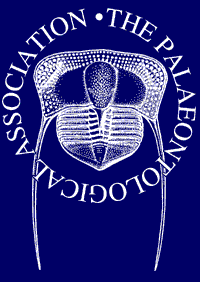
|
Contributors (in alphabetical order) and preliminary title of
their talks
Richard John Aldridge, Department of Geology,
University of Leicester, UK
Loriano Ballarin, Dept. of Biology, University of
Padova, Italy
Paolo Burighel, Dept. of Biology, University of
Padova, Italy
Patricio Dominguez,
Dept. Paleontología, Fac. CC. Geologicas, Universidad
Complutense de Madrid, Spain
Philip C. J. Donoghue, Department of Earth Sciences,
University of Bristol, UK
Jerzy Dzik, Institute of Paleobiology, Polish Academy
of Sciences, Warszawa,
Mikhail A. Fedonkin, Paleontological Institute,
Russian Academy of Sciences, Moscow, Russia
Bernd Fritzsch, Dept. of Biomedical Sciences,
Creighton University, Omaha, USA
Frietson Galis, Leiden University, The Netherlands
Fabio Gasparini, Dept. Biology, University of Padova,
Italy
Neil J. Gostling, Department of Earth Sciences,
University of Bristol, UK
Richard Jefferies, Department of Palaeontology, Natural
History Museum, London, UK
Zbynek Kozmik, Institute of Molecular Genetics,
Academy of Sciences of the Czech Republic, Prague, Czech
Republic
Shigeru Kuratani,
Laboratory for Evolutionary Morphology, Center for
Developmental Biology, Riken, Kobe, Japan
Bertrand Lefebvre, UMR Biogéosciences, Université de
Bourgogne, Dijon, France
http://www.natur.cuni.cz/IGP/staff/fatka.html
Stylophorans ("calcichordates"): not the ancestry of vertebrates. John G. Maisey,
American Museum of Natural History, New York, NY, USA
Jon Mallatt, Washington
State University, Pullman, USA
Lucia Manni, Department of Biology, University of
Padova, Italy
Francoise Mazet, University of Oxford, Department
of Zoology, Oxford, UK
Moya Meredith Smith, MRC Center for Developmental
Neurobiology, King's College London, United Kingdom
Axel Meyer, Department of Biology, University of
Konstanz, Germany
Lennart Olsson,
Institut für Spezielle Zoologie und Evolutionsbiologie mit
Phyletischen Museum,
Friedrich-Schiller-Universität Jena, Germany
Gerhard Schlosser, Brain Research Institute,
University of Bremen, Germany
Degan Shu,
NW Univ Xian, Early Life
Inst, Xian, Peoples R China
Karl
Wotton,
Department of Zoology,
University of Oxford |

